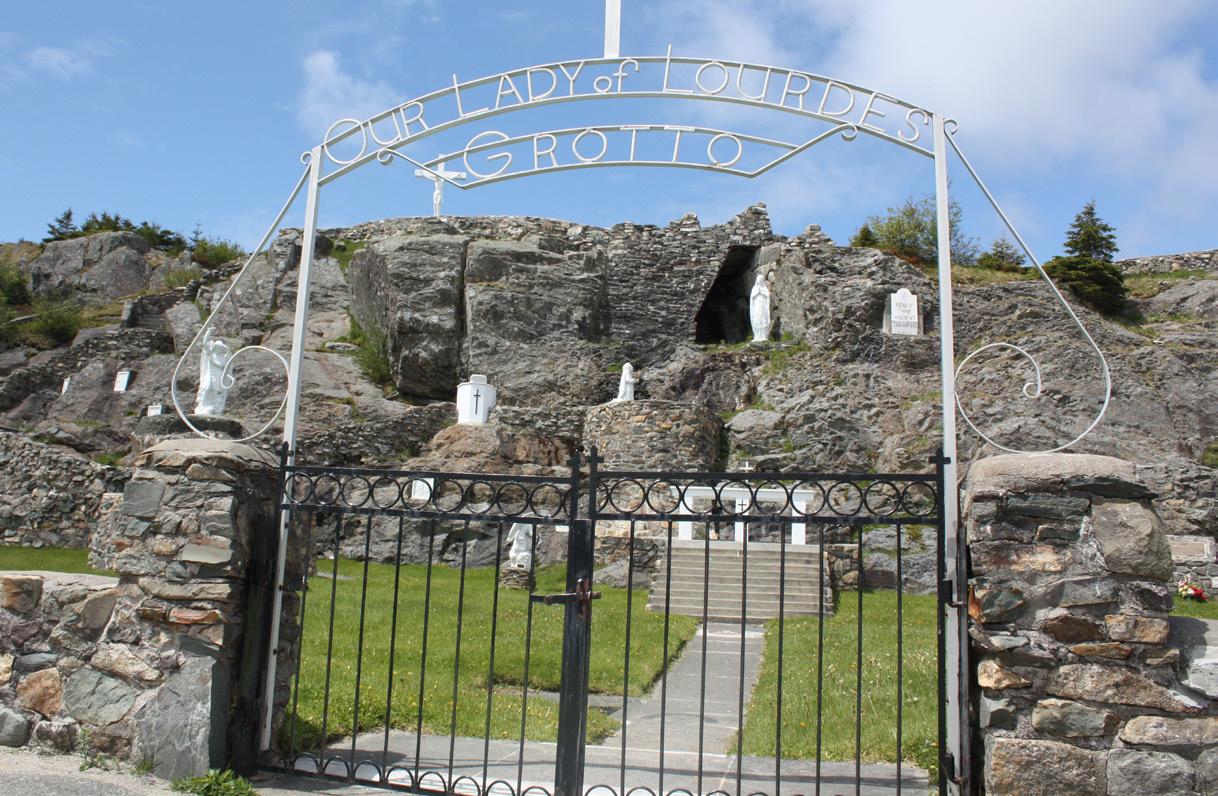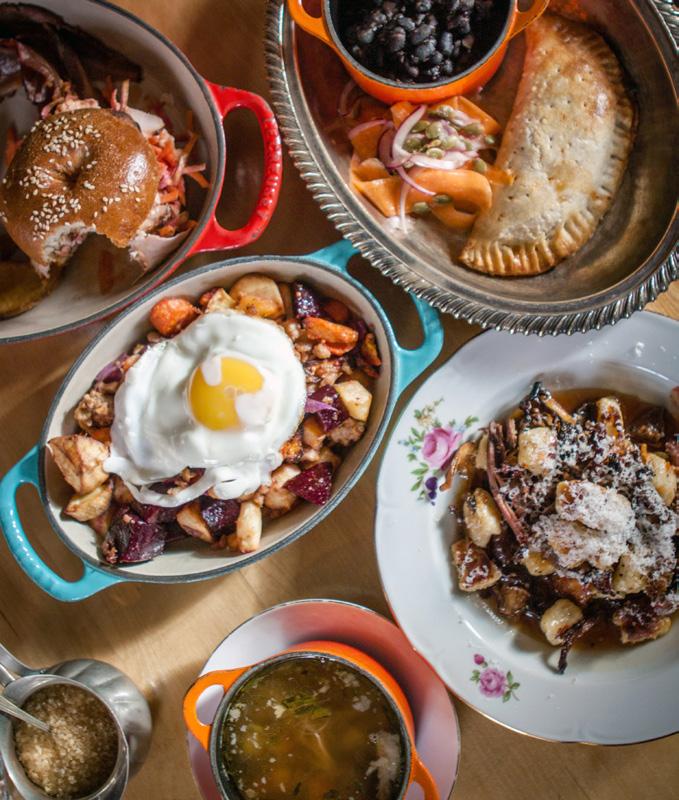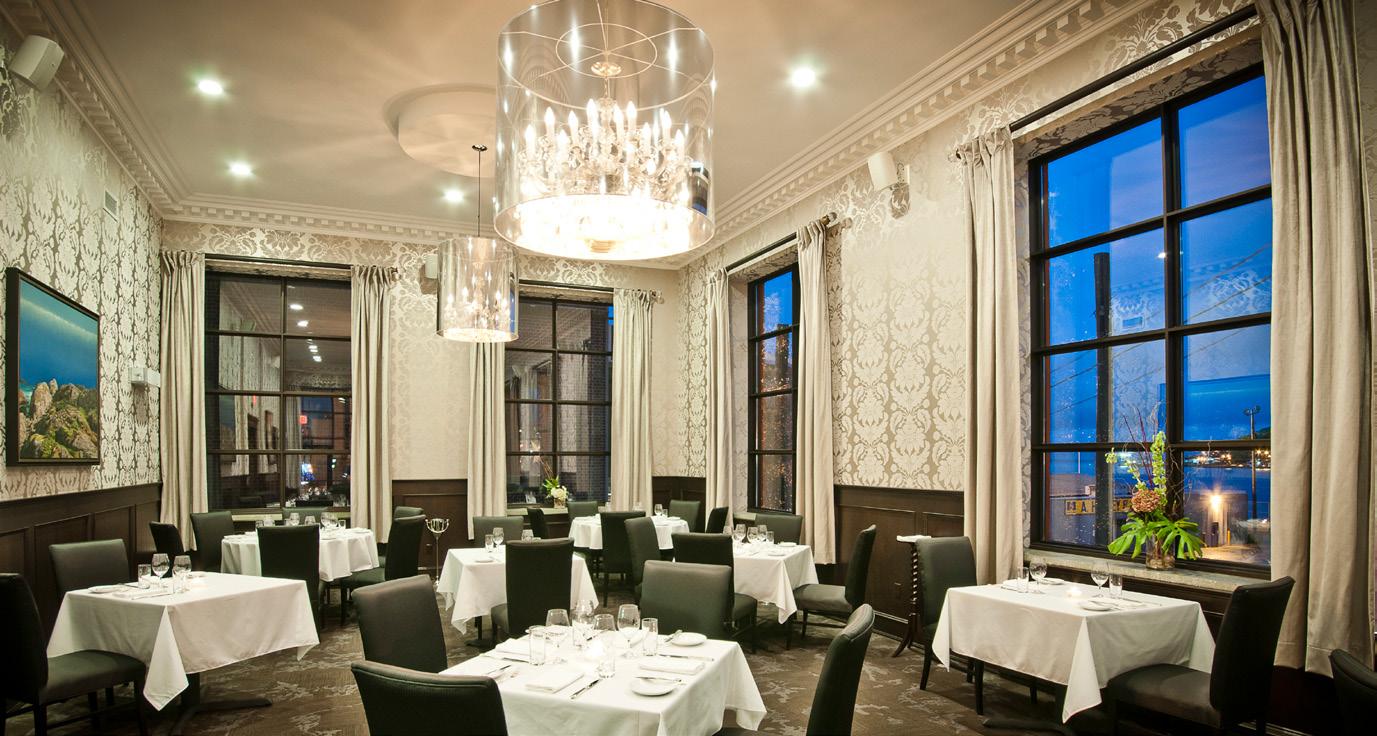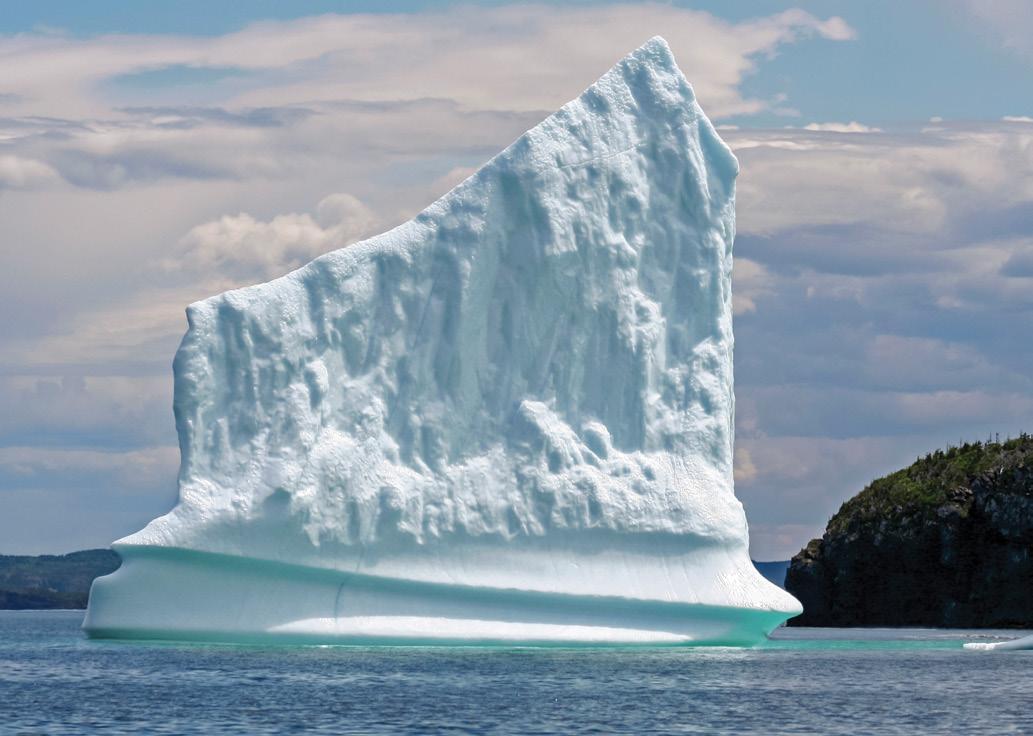
5 minute read
NEWFOUNDLAND AND LABRADOR Get out of town: short drives from St. John’s
Get out of town: short drives from St. John’s
From iceburgs to grottos, just out “round the bay”
BY DARCY RHYNO
It’s a gloomy, blustery day with rain threatening, but when I see them, I can’t help but stop the car and head down to the water’s edge. A dozen curious onlookers are crowded onto a rock, gazing out over a small iceberg anchored on the rocky bottom of Deadman’s Bay on Newfoundland’s east coast. Two smaller chunks of ice float nearby and a larger iceberg lurks in the distance.
The icebergs and the weather magnify the impression that this is a raw place exposed more than most to the elements. Icebergs are common here, but visitors to Newfoundland like me and the other dozen onlookers find them mysterious and haunting. All four of these bergs were calved off a Greenland glacier two or three years ago and have drifted nearly 3,000 kilometres so far. The one offshore still has far to go before it will completely melt in the warm Gulf Stream waters southeast of here, but the other three are at the end of their journey.
Back in the car, I head to my destination just a few more kilometres down the road, a rocky bluff that is literally the edge of North America: Cape Spear Lighthouse National Historic Site. This is the most easterly point of land on the continent. I climb up to the top of the craggy cliff to the province’s oldest surviving lighthouse. Looking north along the coast, I spot the offshore iceberg and beyond it, the mouth of St. John’s harbour.
Worlds away, minutes from downtown
Passing icebergs add to the lonely atmosphere at Cape Spear, a place that feels so isolated, it’s a bit jarring to remember that this beacon on the cliff top is just a 15-minute drive from downtown St. John’s, the capital city of Newfoundland and Labrador. St. John’s is that kind of city—a small enclave in a remote, sometimes forbidding corner of the world.
Cape Spear Lighthouse is located on the most easternly point in North America.

DESTINATION ST. JOHN’S DARCY RHYNO Mallard Cottage

DESTINATION ST. JOHN’S

Raymonds

The city itself is a lively place with a thriving cultural community and culinary scene. Restaurants like Mallard Cottage, Chinched and Raymonds are known across Canada and beyond for their contemporary cuisine with a Newfoundland flair. The pulse of St. John’s can be found in theatres like the Spirit of Newfoundland, at historic landmarks like Signal Hill and inside the impressive museum and galleries at The Rooms. The nightlife on George Street and one-of-a-kind events like the Mummers Festival pulsate at the heart of this exhilarating city.
Short drives in almost any direction reward the adventurer with sights and scenery that feel a thousand miles away from any city. Some spots feel like living postcards, others like history books waiting to be opened, and still others like outdoor museums. Continuing south from Cape Spear, four islands make up the Witless Bay Ecological Reserve, the nesting area for the largest puffin colony in North America at a quarter million pairs. It’s also one of the best whale-watching locations in the province. Tour operators in all manner of craft guide visitors to wildlife spectacles on a grand scale—breaching humpback whales, clouds of clown-faced puffins, and a cacophony of kittiwakes, murres and other seabirds.
Mine shafts and butter pots
West of the city, catch the ferry at Portugal Cove for the short 20-minute cruise aboard the little car carrier to Bell Island, population 2,500. The town of Wabana was once six times that size when an iron ore mining company employed thousands. The mines were closed half a century ago, but the Bell Island Community Museum tells the whole story during their “No. 2 Mine Tour.” Visitors descend over 200 metres into the mine and hear stories of the men and boys who worked so hard while risking their lives to make a living.
While on the island, check out the Bell Island Lighthouse for the views and the onsite café where you can find a sandwich and a bowl of chowder. For hardier fare, the locally renowned Dicks’ Fish and Chips has been around since 1950. Loyal customers say their local cod and French fries are the best anywhere. Alternatively, board the return ferry and try one of several eateries in and around Portugal Cove, where the seafood is fresh and the service is Newfoundland-friendly.
The province is well known for its colourful place names, among them Butter Pot Provincial Park southwest of the city on the Trans Canada Highway. This little park is peppered with ponds and has many kilometres of hiking trails, a campground, picnic areas and swimming holes. The main attraction is the panoramic view from the rounded hilltop or “butter pot” where the landscape itself is a lesson in natural history. Erratics or boulders left behind by a retreating glacier are sprinkled about the landscape. You might even spot a moose from up there.
For one more edge-of-the-world experience near the capital, I drive Route 20 north to Flatrock, just south of Murdering Gulch. A curious religious site has drawn me here. Our Lady of Lourdes Grotto might look like it belongs on a lonely mountain road in the Pyrenees or the Alps, but here it is in Newfoundland, with statues of St. Bernadette and St. Michael, the patron saint of the community. In 1984, Pope John Paul II visited and prayed here.
Further along the road, I arrive at Cape St. Francis, a rocky finger marking the southern entrance to Conception Bay. The remains of the light keeper’s house and tower still










